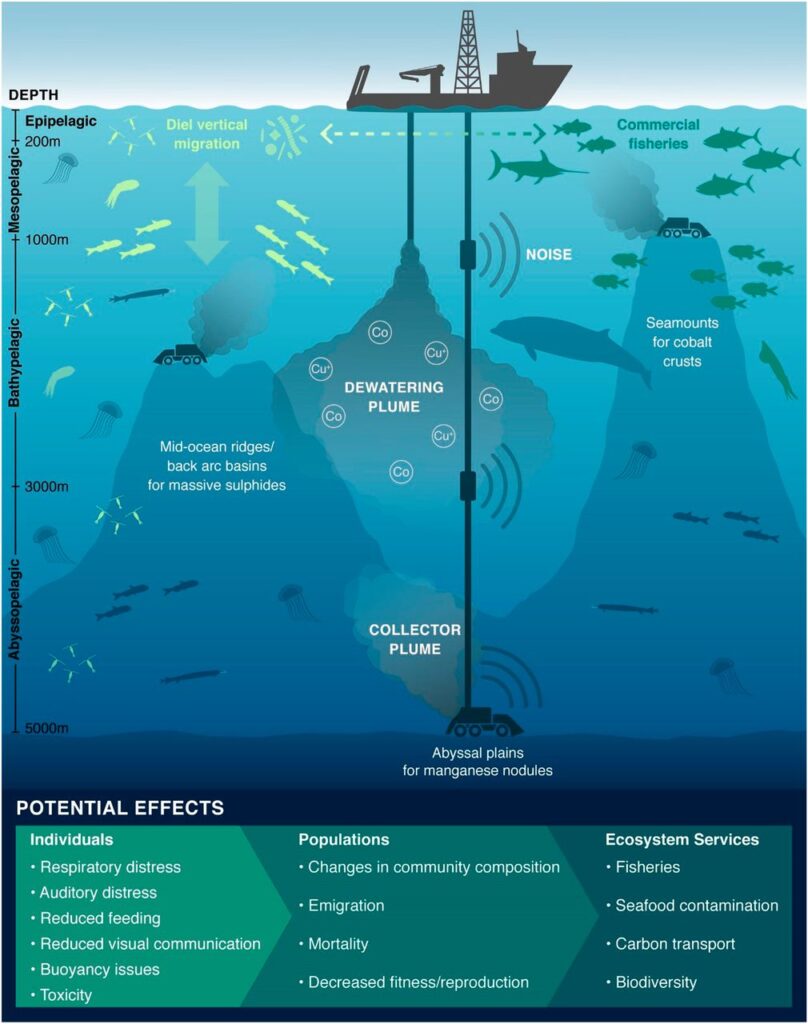Why in News?
- Deep sea mining will be 25 times as bad as mining on land: Report
For Prelims: Deep Sea Mining, DSSC
For Mains: Methods of deep sea mining
- According to a report by non-profit Planet Tracker, the negative impact on biodiversity could be up to 25 times greater than that of land-based mining.
- Biodiversity Loss: The deep sea is a habitat for many unique species that could be lost due to mining. Many of these species are yet to be discovered and studied. The loss of these species could have cascading effects on the marine food chain.
- Habitat Destruction: Mining can lead to the destruction of physical habitats in the deep sea. These habitats often take a long time to recover, if they can at all.
- Pollution: Mining can cause pollution in the form of noise, light, and chemicals. The release of stored carbon in the deep sea could also contribute to climate change.
- Sediment Plumes: Mining can stir up sediment from the sea floor, creating plumes that can travel long distances. These plumes can smother marine life and affect the water’s chemical balance.
What is deep sea mining?
- According to the International Union for Conservation of Nature (IUCN), the extraction of mineral resources from the ocean below 200 metres is called deep sea mining.
What are the proposed methods to conduct deep sea mining?
According to Deep Sea Conservation Coalition (DSSC), an initiative formed in 2004 to safeguard deep-sea ecosystems, the seabed can be mined in three ways:
- Extracting metals from polymetallic nodules on abyssal plains: Abyssal plains are underwater plains on the sea floor. Polymetallic nodules contain a variety of metals including manganese, iron, copper, nickel, cobalt, lead and zinc, and small but significant concentrations of molybdenum, lithium, titanium, and niobium, among others.
- Stripping cobalt crusts from seamounts: Scientists believe that underwater mountains formed through volcanic activity are potentially rich in cobalt Cobalt crusts accumulate at depths of between 400 and 7,000 metres. Seamounts are also rich sources of iron, manganese, nickel, copper and rious rare metals, including rare earth elements.
- Extracting polymetallic sulphides from hydrothermal vents: These are also called sea floor massive sulphides and are rich in copper, iron, zinc, silver and gold. Active hydrothermal vents are also homes to unique ecosystems, containing chemosynthetic bacteria, giant tube worms, crustaceans, molluscs and other species -many believed to be endemic to the vents.

DSSC
- Deep Sea Conservation Coalition (DSCC) was founded in 2004 in response to international concerns over the harmful impacts of deep-sea bottom trawling.
Goals
- To remove and mitigate the greatest threats to life in the deep sea.
- To safeguard the long-term health, integrity and resilience of deep-sea ecosystems.
